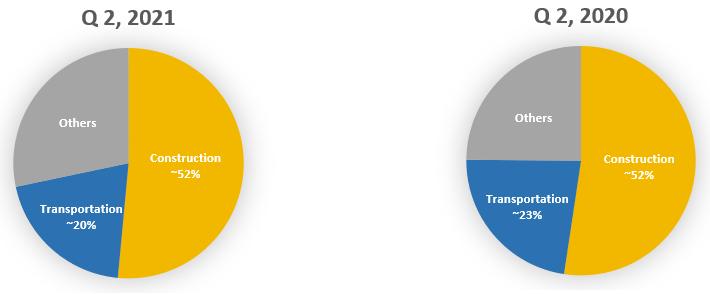ITEM 2: MANAGEMENT’S DISCUSSION AND ANALYSIS OF FINANCIAL CONDITION AND RESULTS OF OPERATIONS
Cautionary Note Regarding Forward-Looking Statements
Forward-looking statements may appear throughout this report, including the following section “Management’s Discussion and Analysis of Financial Condition and Results of Operations”. Forward-looking statements are typically identified by such words as “aim”, “anticipate”, “believe”, “could”, “continue”, “estimate”, “expect”, “intend”, “may”, “ongoing”, “plan”, “potential”, “predict”, “will”, “should”, “would”, “could”, “likely”, “generally”, “future”, “long-term”, or the negative of these terms, and similar expressions intended to identify forward-looking statements. Forward-looking statements are based on current expectations and assumptions that are subject to risks and uncertainties that may cause actual results to differ materially
While we have not described all potential risks related to our business and owning our common shares, the important factors discussed in “Part II, Item 1A: Risk Factors” of this Quarterly Report on Form 10-Q and in “Part I, Item 1A: Risk Factors” of our Annual Report on Form 10-K for the year ended December 31, 2020, which is available on our website at www.rbauction.com, on EDGAR at www.sec.gov, or on SEDAR at www.sedar.com, are among those that we consider may affect our performance materially or could cause our actual financial and operational results to differ significantly from our expectations. Except as required by applicable securities law and regulations of relevant securities exchanges, we do not intend to update publicly any forward-looking statements, even if our expectations have been affected by new information, future events or other developments.
We prepare our consolidated financial statements in accordance with United States generally accepted accounting principles (“US GAAP”). Except for Gross Transaction Value (“GTV”)1, which is a measure of operational performance and not a measure of financial performance, liquidity, or revenue, the amounts discussed below are based on our consolidated financial statements. Unless indicated otherwise, all tabular dollar amounts, including related footnotes, presented below are expressed in thousands of United States (“U.S.”) dollars.
In the accompanying analysis of financial information, we sometimes use information derived from consolidated financial data but not presented in our financial statements prepared in accordance with US GAAP. Certain of these data are considered “non-GAAP financial measures” under the SEC rules. The definitions and reasons we use these non-GAAP financial measures and the reconciliations to their most directly comparable US GAAP financial measures are included either with the first use thereof or in the Non-GAAP Measures section within the MD&A. Non-GAAP financial measures referred to in this report are labeled as “non-GAAP measure” or designated as such with an asterisk (*). Please see pages 45-49 for explanations of why we use these non-GAAP measures and the reconciliation to the most comparable GAAP financial measures.
Overview
Ritchie Bros. Auctioneers Incorporated (“Ritchie Bros.”, the “Company”, “we”, or “us”) (NYSE & TSX: RBA) was founded in 1958 in Kelowna, British Columbia, Canada and is a world leader in asset management technologies and disposition of commercial assets, selling $5.41 billion of used equipment and other assets during 2020. Our expertise, unprecedented global reach, market insight, and trusted portfolio of brands provide us with a unique position in the used equipment market. We sell used equipment for our customers through our unreserved auctions at over 40 auction sites worldwide, which are also simulcast online to reach a global bidding audience and through our online marketplaces.
Through our unreserved auctions, online marketplaces, and private brokerage services, we sell a broad range of used and unused commercial assets, including earthmoving equipment, truck tractors, truck trailers, government surplus, oil and gas equipment and other industrial assets. Construction and heavy machinery comprise the majority of the equipment sold. Customers selling equipment through our sales channels include end users (such as construction companies), equipment dealers, original equipment manufacturers (“OEMs”) and other equipment owners (such as rental companies). Our customers participate in a variety of sectors, including heavy construction, transportation, agriculture, energy, and mining.
We also provide our customers with a wide array of other services aligned with our growth strategy to create a global marketplace for used equipment services and solutions. Our other services include equipment financing, asset appraisals and inspections, online equipment listing, logistical services, and ancillary services such as equipment refurbishment. Additionally, we offer our customers asset technology solutions to manage the end to end disposition process of their assets and provide market data intelligence to make more accurate and reliable business decisions.
1 GTV represents total proceeds from all items sold at our auctions and online marketplaces. GTV is not a measure of financial performance, liquidity, or revenue, and is not presented in our consolidated financial statements.

